A labor of love and friendship
A pair of friends chase a dream and undertake a two-year restoration of a classic Bluenose sloop
The allure of a Bluenose was always there. We had both owned or sailed a variety of boats in our home waters in the Finger Lakes region of New York and in the British Virgin Islands, everything from Lightnings and Flying Scots in fresh water (which was how we first met, the Byrnes sailing a Lightning and the Williams sailing a Flying Scot) to Beneteaus and Jeanneaus in the Caribbean, all fabulous in their own way. But we had long harbored a love of the classic lines and performance of the Bluenose; a sleek, fixed-keel daysailer designed and built in Nova Scotia beginning in the late 1940s.
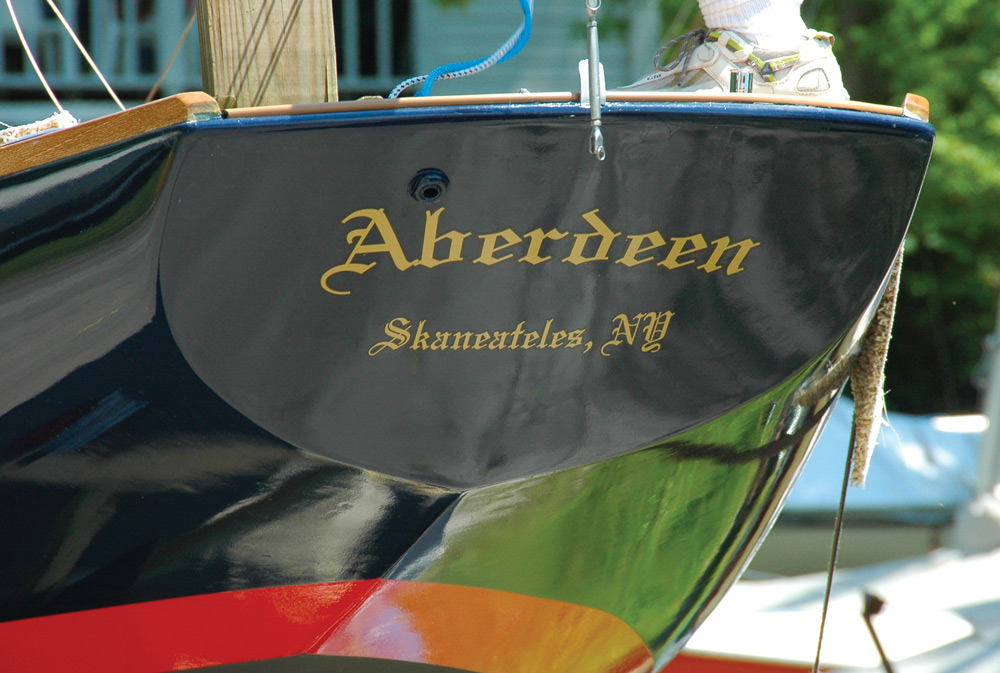
The first generation versions were built of wood, with pine planking on oak frames and gorgeous sheerlines. They were 23 feet in length, with a fin keel and 800 pounds of ballast, which allowed them to carry a sailplan of 218 square feet. When fiberglass came into vogue, the builder added a cuddy cabin and bubbletop at the base of the mast. It may have added some functionality, but in the minds of most purists, that modification ruined the classic lines of the boat.
Seventy-seven of the wooden hull versions were built before the change to fiberglass. Over time, the Bluenose began to make its way into U.S. waters, but always the fiberglass version. We had seen several of them over the years and admired them, but always had an eye out for the original style, with wooden hull and clean deck. They seemed impossible to find. Finally abandoning hope of finding a wooden version, we decided to take a chance on a fiberglass model and restore it, as much as possible, to the original design.
In Havre de Grace, Maryland, we found Bluenose hull No. 121, built in 1973 by McVay Yachts of E. Chester, Nova Scotia. Through a succession of owners, most of its life had been spent in salt water and the boat was in rough shape. We decided to spare no effort, or expense, in restoring and modifying the boat. What we thought might require a full year of our spare time stretched out into more than two.
The two of us, now 66 and 70 and friends for more than 40 years, did all of the work, with the exception of applying the topside paint, opting to hire a professional to spray it. We spent more than two years on the project, from May 1, 2015 to June 12, 2017, and put in approximately 2,000 hours.
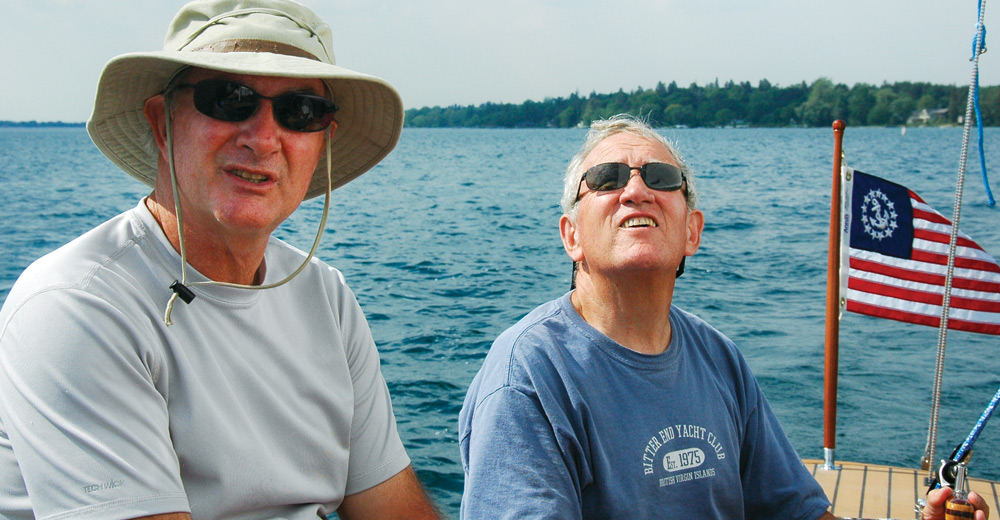
The work began by completely stripping the hull of all hardware, fittings, trim and toerail. With a saber saw, we cut out the bubbletop, seats, bulkheads and flooring. Five or six coats of bottom and topside paint were stripped off, many of which had been improperly applied. With all paint removed, we discovered hundreds of blisters and dozens of gouges in the hull, all of which had to be filled and faired.
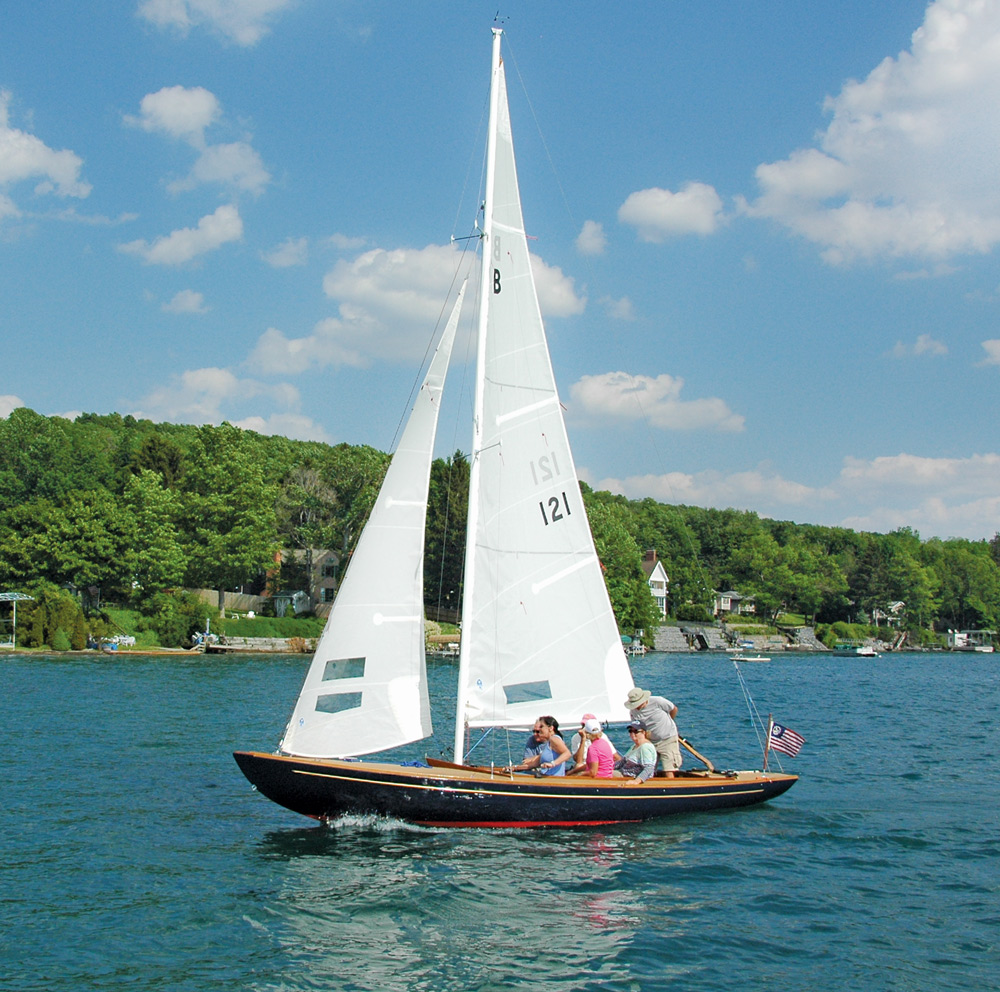
Using white oak, we fashioned new floor boards, seats, cockpit coamings, splash rails, toerails and a custom-made barney post located in the center of the cockpit where all lines would be led. These materials were given nine coats of varnish, a process that required many months. Using plans and photographs of the original wooden hull, we tried to replicate the original design as closely as possible.
While the early models had canvas decks, we thought that a synthetic teak would be both functional and provide a killer look. Check that box!
One complication of the decision to remove the bubbletop and cuddy cabin is that the mast, which was deck-mounted, had to be modified and extended to mount on a mast block on the floor.
Wooden bulkheads were installed, flooring and seating added, coamings and trim put in place and, gradually, she began to look very much like the original Bluenose, designed in 1946 by William J. Roué. We applied bottom and topside paint, and cleaned and painted the mast and boom with a white epoxy paint.
We named her Aberdeen, a homage to the country the Williams family had emigrated from.
The finished product exceeded even our fondest hopes. Aberdeen is an extraordinarily beautiful boat, one that people stop and stare at as she glides by. Undoubtedly, it would have been quicker and less expensive to find one of those elusive original wooden version of the Bluenose, and restore it, but this was a labor of love and the effort was well worth it.
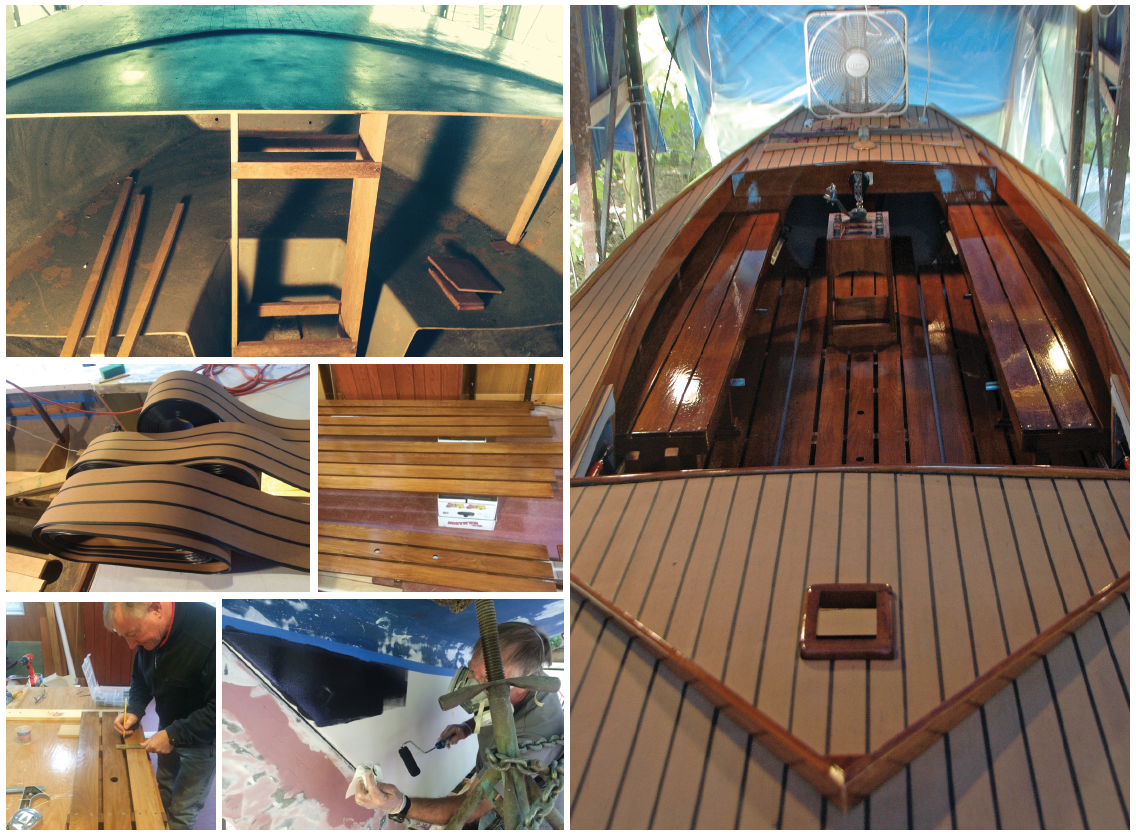
Some materials used in the restoration of Aberdeen
• Stripping compound: Total Boat Aqua Strip” (10 gallons)
• Fairing compound: Total Boat Awlfair (3 quarts)
• Primer/Barrier paint: Interlux Interprotect
(5 coats)
• Topside paint: Total Boat Awlcraft 2000 in Flag
Blue (3 coats, sprayed)
• Bottom paint: Interlux VC Offshore
• Bilge paint: TotalBoat Bilge Paint
• Cove stripe: Rustoleum Metal Accents in
Gold Mine
• Mast and boom: Interlux “Perfection” epoxy
primer and top coat - (5 coats)
• Marine varnish: Epifanes Rapid Coat and
McCloskey Marine Spar Varnish (9 coats)
• Custom milled white oak for seats, flooring,
cockpit coaming, splash rail and trim: 5/8th-inch
thick by 6 inches wide
• Custom milled white oak for toerail to
match original
• Synthetic teak for deck: PlasDECK (traditional
shiplap style)
• Sails: North Sails
• Deck hardware: Harken
• Canvas cockpit cover: Handmade by our wives,
Carol Williams and Sue Byrne
Cost of REFIT
Sails (purchased in Nova Scotia, at Canadian exchange rate): $3,800
Lumber: $1,650
PlasDECK synthetic teak decking & materials: $2,000
Misc. (hardware, paint, supplies, materials, rigging, etc.) Approx. $12,000
Total: $19,450
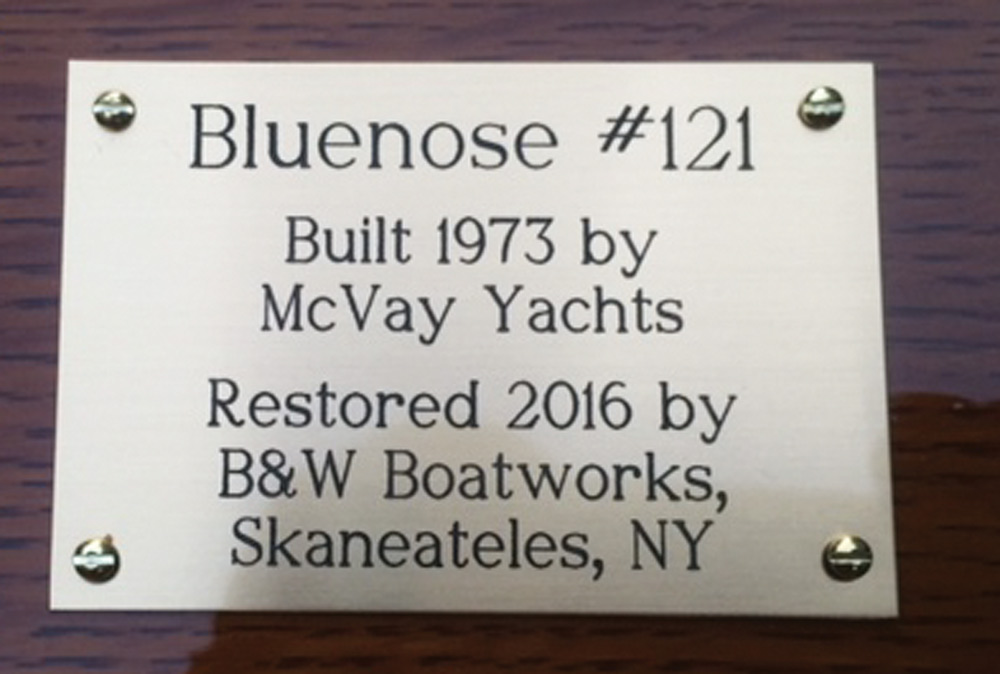

Comments